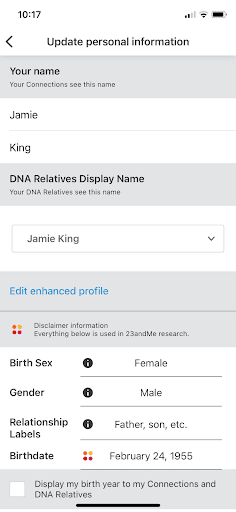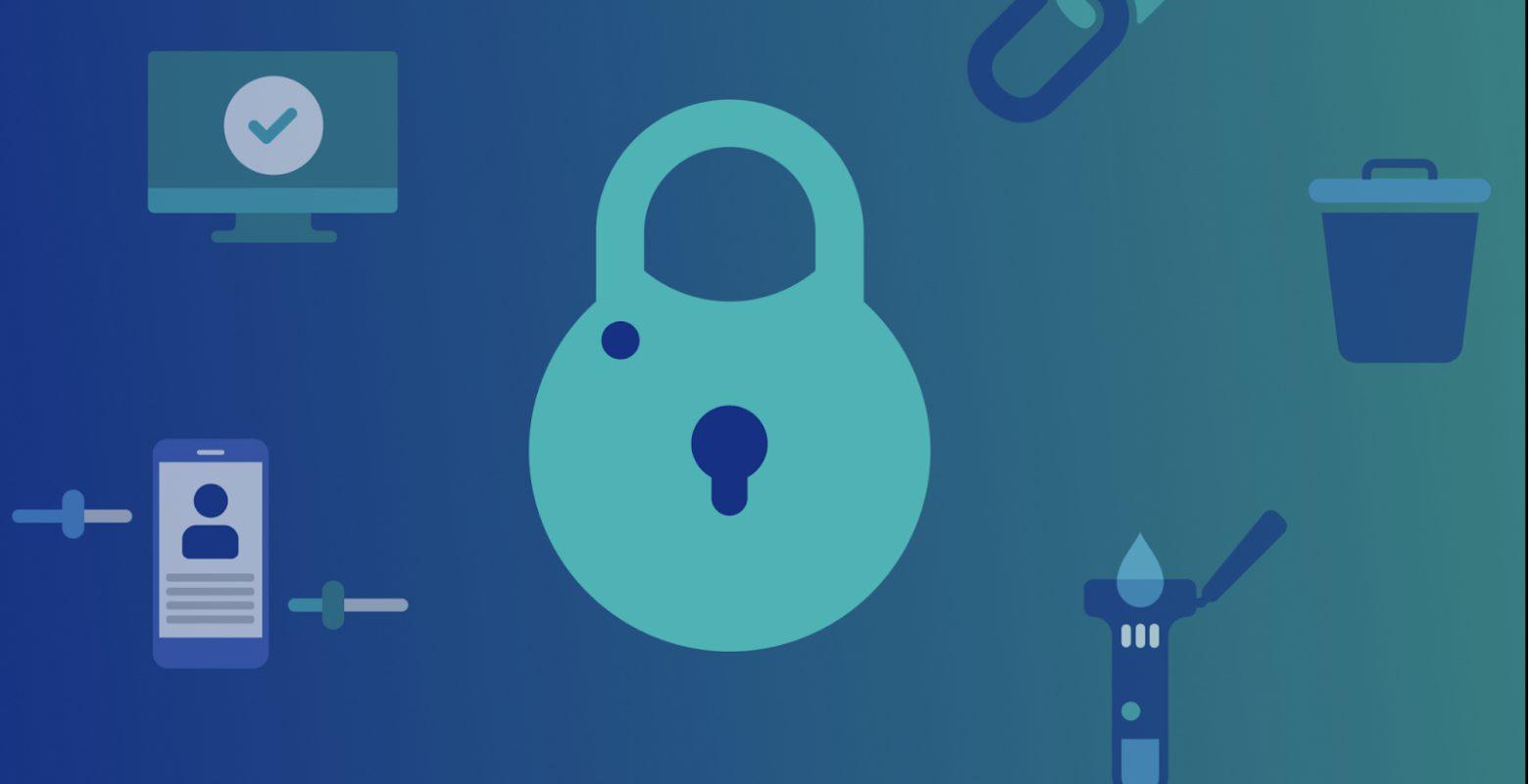Editor’s Note: This post was updated 1/5/2022 with video comments from some of our customers.
We’ve made some important updates to give customers greater control over tailoring their product experience so it more accurately reflects their gender.
23andMe now allows customers to distinguish between their sex assigned at birth and their gender. This allows all customers, but especially our transgender and/or non-binary customers, to have their gender accurately reflected in relevant product features, during their interactions with other customers they choose to make connections with, and if they choose to participate in DNA Relatives.
Current customers can take advantage of these updates by adding their gender and preferred relationship labels in their Account Settings.
Why have we made these changes?
As part of our commitment to diversity, equity, and inclusion, we are continually improving our product to reflect the diversity of all of our customers. This particular update was in response to customers who want their 23andMe profiles to more accurately reflect their gender. Not only that, but it’s the right thing to do. Our trans and non-binary customers have every right to see themselves reflected accurately in their 23andMe experience. And we want them to be able to participate in all of the features 23andMe offers safely and as their full, authentic selves.
What has changed?
After consulting our 23andMe LGBTQ+ Employee Resource Group and a focus group of transgender customers, 23andMe has added the option for customers to provide their gender (including a non-binary option), in addition to their birth sex, during account registration and in their Account Settings.
If a customer chooses to opt in to research, their gender may be included, but it is always de-identified from their genetic information. Additionally, if they indicate their gender is not the same as their birth sex, they will receive additional messaging about their health reports.
Customers can also now decide if they would like to have masculine, feminine, or gender-neutral relationship labels (e.g., brother, sister, or sibling) shown to their connections and DNA relatives (if they choose to opt into these features).
23andMe will continue to use a customer’s birth sex as a part of our laboratory quality control steps. This is because if someone’s self-reported sex doesn’t match what we’ve determined from our analysis of their DNA, we want to make sure there wasn’t an error in processing. We will also continue to use a customer’s birth sex to help us deliver or interpret results for certain health, wellness, and traits topics.
All of this information can be changed at any time in a user’s Account Settings.
We hope these changes will start to make our product more inclusive for our transgender and non-binary customers. As more research becomes available, for example on how hormone replacement therapy may affect risk estimates, we hope to keep improving our product so that it is more relevant for these customers. We also know we have more work to do (for example, for our intersex customers) to make sure everyone has the opportunity to access, understand, and benefit from the human genome.
More reading:
- How 23andMe Uses Your Self-Reported Sex
- How was your sex determined? It might be a lot more complicated than you think
- 23andMe’s Commitment to Diversity, Equity & Inclusion




